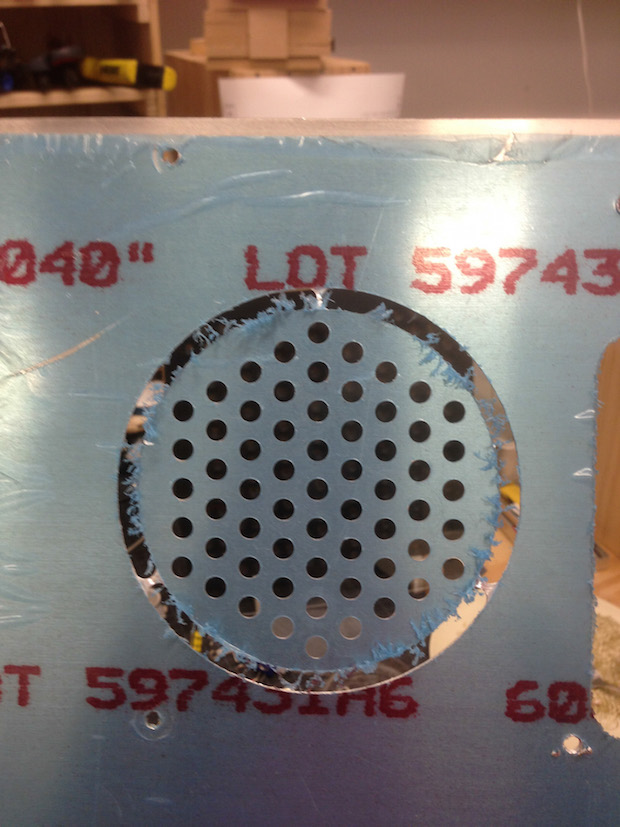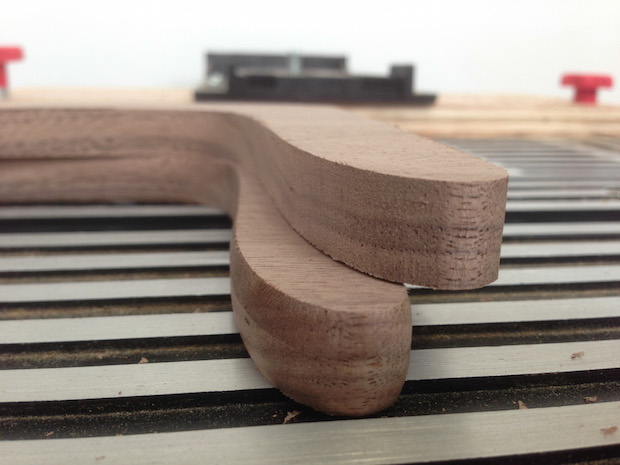
After setting his eyes on an expensive handmade drip coffee stand, a friend of mine commissioned me to create something similar for his Hario V60 Ceramic Dripper. The overall form is a very simple twist (literally) on other drip stands. I set three objectives for its design: it needed to be easy to clean, use only natural materials (no MDF or plastic), and not appear to be obviously made with CNC.
To these ends, the stand is made of walnut (a good wood for hiding coffee stains) and lined in a couple of places with removable — and washable — cork to absorb unwanted dripping. To add a high-end touch, I CNC milled an aluminum disk for the base.
Click here to download the templates and 3D model for this CNC drip coffee stand.






















